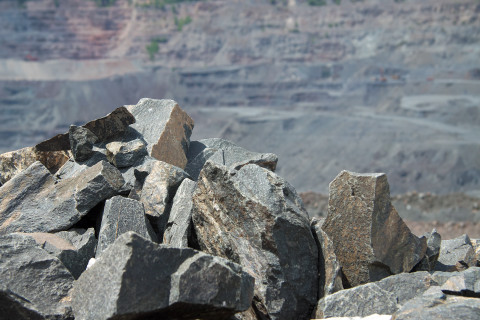Regional and local newspapers in Northern Finland are mainly positive or neutral when reporting on mineral exploration and mining activities in Finnish Lapland, according to an international study exploring public debate and attitudes towards mining in regional and local newspapers in Finland, Germany and Spain. The study was published in Mining Metallurgy & Exploration.
In Finnish newspapers, editorials were most clearly in favour of mining, while the tone of journalistic texts on mineral exploration and mining activities was neutral or positive. Critical perspectives were mainly expressed in opinion pieces. Of the countries compared, Spanish newspapers in the Andalusia region reported on mining activities clearly more positively than Finnish newspapers. The share of critical reporting in all countries was low, less than one fifth. However, in Finland the share of critical reporting was higher than in Germany or Spain.
“The media plays a major role in what it emphasises and what it leaves out. It shapes people’s awareness of things and their opinions about them. In Finland, where the study focused on the Lapland region, the tone of reporting on mineral exploration was very positive, and environmental risks were often mentioned only in passing. The importance of minerals for the battery industry and their significant role in the energy transition was a clear sub-theme in reporting,” says Early-Stage Researcher Juha Kotilainen from the University of Eastern Finland, one of the authors of the study.
The researchers found clear similarities between the countries compared: among the general themes highlighted by the newspapers were mining revival, history of mining, and damages related to mining. Past, present, and future employment opportunities were also key storylines. The need to balance the environmental and other risks of mining activities with economic prosperity was highlighted especially when there were disputes.
The study supports earlier observations of newspapers basing most of their reporting on press releases issued by various actors, including mining companies. This is a possible way of influencing expectations of mining activities at the local level. The researchers were surprised by how little coverage was given to the debate between the mining industry and environmental organisations, and to the voice of local communities, although they are visible in social media, for example.
“It is possible that the relatively low visibility of environmental organisations in newspapers is due to them favouring other channels of communication, for example,” Kotilainen estimates.
The researchers observed two general storylines in the newspapers: one focused on the economic and employment potential of mining activities, and the other dealt with the potential negative environmental impacts. These storylines are influenced by stakeholders with pro-mining or anti-mining agendas.
“The first storyline is fuelled by the benefits of mines, such as activities funded by mining companies, investments in the region, and potential jobs. The positive attitude of the media is therefore partly dependent on the impact of mining activities on the local economy. That can change rapidly if the sector loses its importance. The second storyline is advocated by organisations and local people who are particularly concerned about environmental risks, such as water and waste management. The negative storyline easily becomes strengthened by isolated cases of accidents and misconducts serving as cautionary examples, affecting the perceptions of the entire mining sector,” Kotilainen says.
On a longer-term, the positive storyline may remain persistent because of high and even increasing societal demand for many products of the mining industry. On the other hand, if the expected local benefits diminish or fail to materialise while environmental damage keeps making headlines, mining activities can be called into question to an increasing degree.
The data for the study were collected as part of the INFACT project funded by the EU Horizon 2020 programme. The objective of the project was to develop innovative, environmentally friendly and socially acceptable mineral exploration methods. A total of 17 organisations from seven countries participated in the INFACT project. The project was coordinated by the Helmholtz Institute Freiberg for Resource Technology (HIF) in Germany.
The sample of regional and local newspapers was limited to a period of 18 months from September 2018 to February 2020. The Finnish sample from newspapers published in Northern Finland included 142 articles. The lead author of the article is Senior Researcher Jari Lyytimäki from the Finnish Environment Institute. At the University of Eastern Finland, Early-Stage Researcher Juha Kotilainen and Senior Researcher Tuija Mononen from the Department of Geographical and Historical Studies, are among the authors.
The article is available (as full text) at https://link.springer.com/article/10.1007%2Fs42461-021-00453-4. The website of the INFACT project is available at https://www.infactproject.eu/.
For further information, please contact:
Juha Kotilainen, Early-Stage Researcher, Department of Geographical and Historical Studies, University of Eastern Finland, [email protected]
Tuija Mononen, Senior Researcher, Department of Geographical and Historical Studies, University of Eastern Finland, [email protected], tel. +358 50 372 8627


